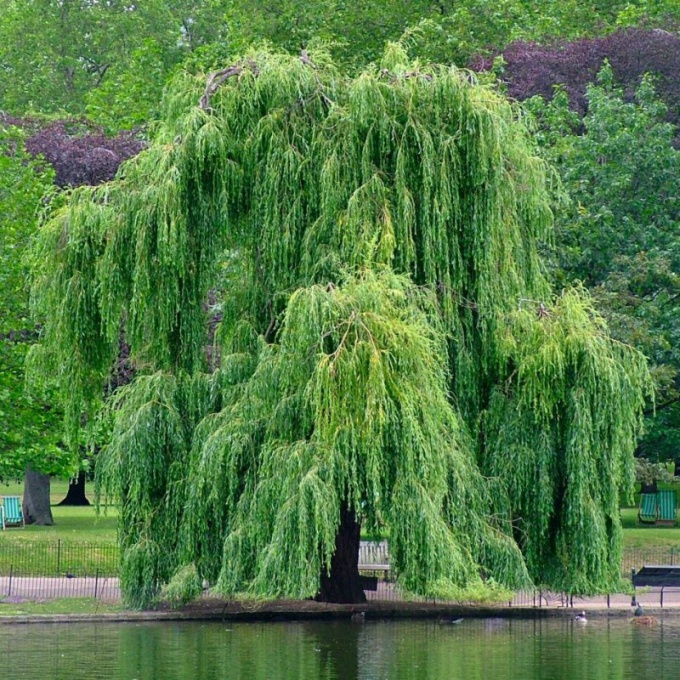Scientific explanation
Willow, growing mainly in ponds, lakes and rivers, gets moisture in excess. Her roots are deeply enough immersed in water, and the humidity around the reservoir significantly increased. Therefore, excess water must somehow get rid of, because it is necessary to maintain the normal balance of biological processes. So, willow, how would "merge" all the unnecessary water through the leaves, i.e., "crying".
The process of gulali – selection of moisture through the leaves, it is very rare trees, but it is inherent in many cereals, especially in the turbulent period of growth.
"Popular" explanation
Russian people willow has long been considered one of the most powerful amulets against evil forces. This tree is associated with many legends and mysterious stories. It was thought that willow was crying because inside it lived a girl who lost a loved one.
Recognized the beauty of the willow
The willow tree is called the Babylonian, because in ancient times it willow was used for landscaping along with poplar and tamarisk. This old tree in my 60 years can reach a height of about 15 meters. Most likely, and associated with this frequent mention of "the old weeping willow that grows on the banks of the river."
The blooming willow is a truly beautiful sight. She happily dismisses his silver earring. And it's like the only time willow forgets his anguish and sincere rejoicing.
It is worth noting the fact that IVA is not only the tree of mystery, but still very useful plant. In ancient times people were successfully treated for fever by a willow bark infusion. It contains a substance called salicin, and it has a good antipyretic effect. But to live near bodies of water, decorated with willow trees, people did not want. The reason is a belief that persistent tears of the willow transmitted and the number of living people.
